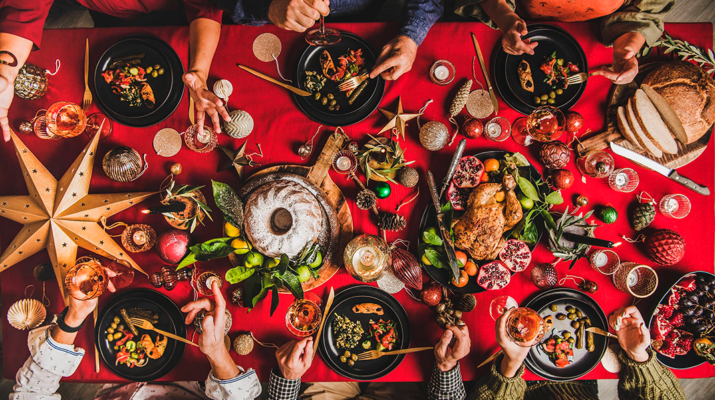By Deborah Jeanne Sergeant
With the holiday season comes good cheer, jolly times and a bevy of buffet options. Unfortunately, many of the choices are calorie-laden and void of nutrients.
With a few strategies, you can stay festive while eating well and not forgoing favorites.
It may seem sensible to skip breakfast and lunch if your plans include a big family meal in the evening. Haylee Pink, dietetic intern at Geneva General Hospital, warns against it.
“You think going on an empty stomach will help you avoid overeating, but you tend to overeat,” Pink said.

It’s far better to eat modest, balanced meals throughout the day with plenty of protein and produce so hunger does not drive food choices.
Pink also advises bringing your own dish if possible.
“You can add fruit and nuts to a salad, or bring some veggies and a type of dip, or make fruit kebabs,” Pink suggested. “Everyone likes charcuterie boards. You can make it look like a Christmas wreath.”
When facing down the buffet, look for veggies without sauces and dressings, such as raw, steamed or roasted. Fill half the plate with these and some fruit. Whole fruit is always a good choice. Fruit “salads” with marshmallows or whipped topping pack plenty of sugar.
Look for lean protein sources: turkey breast, shrimp cocktail, and salmon. Marbled beef, ham and processed meats are less than ideal choices. Protein should cover one-quarter of the plate.
How food is prepared also matters.
“Oven roasted, baked or grilled are better than fried,” Pink said.
Starches should occupy only one-quarter of the plate. Finding whole grain options may be difficult. Brown rice pilaf, whole grain rolls or sweet potatoes are a few examples.
As at any meal, portion size makes a difference in caloric intake. Pink uses a smaller-sized plate to control portions.
“You often put way more on your plate than you’re going to eat,” Pink said. “Start with small portions as you can always go back for more.”
A holiday party or meal without dessert seems rather Grinch-like. Pink advises taking just a small serving and if possible, choosing something containing fruit.
“Look at the low-glycemic and anti-inflammatory foods,” said Carla Buscaglia, certified nutritionist, master herbalist and owner of Global Nutrition in Pittsford. “If it’s Christmas cookies versus cut-up fruit, pick something you like, like a Christmas cookie and the rest should be the vegetable and fruit tray. You still get the cookie, but you’re also eating fruits and vegetables.”
She likes to prepare a vegetable tray for a party and if time crunched, pick one up from the grocery store. Munching on nutritious, low-calorie veggies can displace noshing on high-calorie treats. They also keep the blood sugar stable, as do other low glycemic foods.
“Blue chips are low glycemic,” Buscaglia said. “And you can get humus or guacamole or salsa. It fills you up from the fat and they’re low glycemic.”
Many people unthinkingly drink far more calories than they are aware. Buscaglia said that adding a touch of punch to a serving of water can eliminate sugar spikes while making the beverage more flavorful.
“Make good decisions if you choose alcoholic drinks,” she added. “Look at Tito’s vodka, mix with a touch of cranberry and seltzer water. Try that instead of eggnog with sugar.”
Alternate drinking water with caloric beverages to reduce the caloric intake.
“As we’re getting older, we have to look at the holidays differently,” Buscaglia said. “It’s about family, not just food. It’s not a free-for-all of everything. It’s six weeks of 52. If you’re prepared, you won’t have that remorse in January.”

